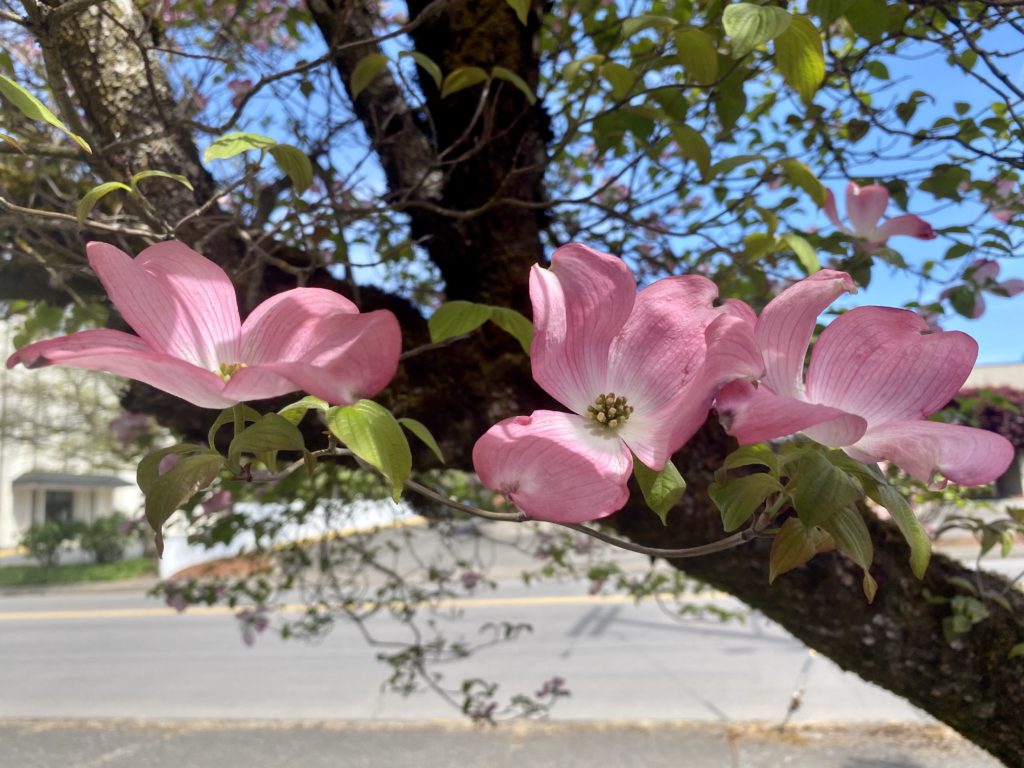- About Us
- Our Work
- Tree Info
- Get Involved
- Blog
- Support Us
By Canopy Team on August 6, 2020

The noise, pollution, and overcrowding of cities appears to be taking a toll on our mental health. People in cities suffer from higher rates of almost every mental health problem compared to those living in rural areas- with 40% higher levels of depression, 20% higher anxiety, and twice the amount of schizophrenia. The personal impacts of these illnesses can be difficult to quantify, but the societal impacts are more measurable. Mental health related issues have been estimated to cost communities more than 4% of GDP and can lead to physical health problems.There are also social implications for communities, including an increase of people and families experiencing homelessness and intergenerational poverty. With increasing numbers of Americans living in cities rather than suburban and rural environments, the mental health impacts of cities must be addressed. One simple yet vital part of the solution is to plant more trees.
For many people, going on a walk in the forest is a relaxing experience- one that allows them to quiet their mind and decompress from the stresses of ordinary life. The idea that trees have a positive impact on mental health, intuitively believed by many, is supported by a wealth of scientific literature. Beyond a sense of calm, trees provide surprising benefits to the mental health and well-being of community members, especially in the context of urban forests.
Of all green spaces, trees seem to have a special impact on people’s mental health. People exposed to areas with good canopy cover have been shown to experience a third less psychological stress. The same cannot be said for other green spaces such as open grassy areas, though this does not diminish their value as spaces for recreation and gathering. Even viewing deciduous trees without leaves during the winter months has been found to lead to positive psychological impacts.
But why do trees specifically have such unique benefits to our collective mental health? One aspect may be the shade that they provide, as hot temperatures are believed to lead to feelings of anger and aggression. Proximity to forests has also been linked with amygdala integrity, meaning that forests may structurally improve the brain’s ability to handle stress. The sensory input of trees may also be a component of their benefits, as rigid, geometric urban scenes are replaced with leafy, irregular, colorful trees. Trees can also block urban noise pollution, leading to quieter, more peaceful communities.
Frederick Law Olmsted, commonly referred to as the father of landscape architecture who designed spaces from New York’s Central Park to Stanford’s campus, wrote that “scenes and objects such as we are apt to call simple and natural… touch us so quietly that we are hardly conscious of them.” Though we may not be immediately aware of the ways that living on a tree lined street or spending time in natural spaces is improving us, it is clear that the effects are profound.
The “Loneliness Epidemic” is a popular subject in conversations about American mental health, as many are concerned about the mental health impacts of older Americans living alone and new attention is being paid to loneliness among young people. Former Surgeon General Dr. Vivek Murthy has said that “we need to think about (loneliness) as a public health issue,” since the impact of loneliness has been found to be equivalent to smoking 15 cigarettes per day. Urban green spaces provide respite from an increasingly disconnected and isolated world, as such spaces have been shown to increase a community’s social cohesion. Open and accessible urban parks are welcoming for people across cultural and social groups, as they facilitate both informal conversations and spaces for gathering, which are essential in combating loneliness.
Trees have also been used in institutional settings to promote concentration and performance. When controlling for factors such as income, school size, ethnicity, and building age, exposure to trees and shrubs has been found to increase test scores and graduation rates of students, while decreasing criminal behavior. In workplaces, increased access to nature has been found not only to boost employee morale, but also to increase efficiency, decrease stress, and increase job satisfaction. Viewing nature can help everyone from kindergarteners to CEO’s remain concentrated and avoid mental fatigue.
The benefits of trees don’t stop in our brains. In fact, the calming benefits of trees have profound impacts on our bodies as well. Studies have found that patients with views of trees from their hospital windows recover faster, require less pain medication, and have fewer complications than those with views of built structures. Spending time around trees even reduces blood pressure and boosts the immune system. As Western medical systems move away from the “artificial separation of the ‘mental’ and ‘physical’,” it is clear that trees will play an increasingly important role in promoting overall wellness.
By investing in our urban forests, American cities are making an investment in mental health. With proper design, urban forests and green spaces promote individual and collective mental wellbeing, increase social cohesion in diverse communities, and create a healthier populace. As our society becomes more aware of the mental health issues facing this country, urban forestry will play an increasing role in addressing these issues.